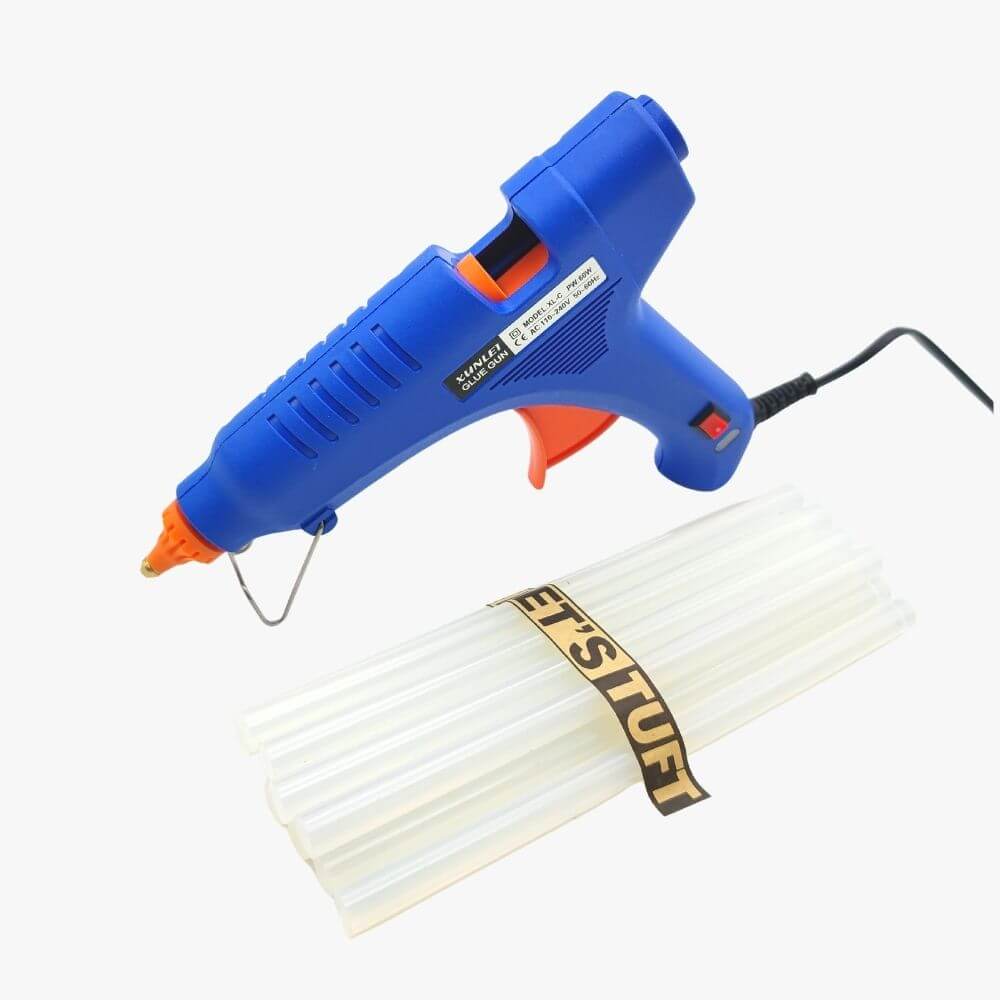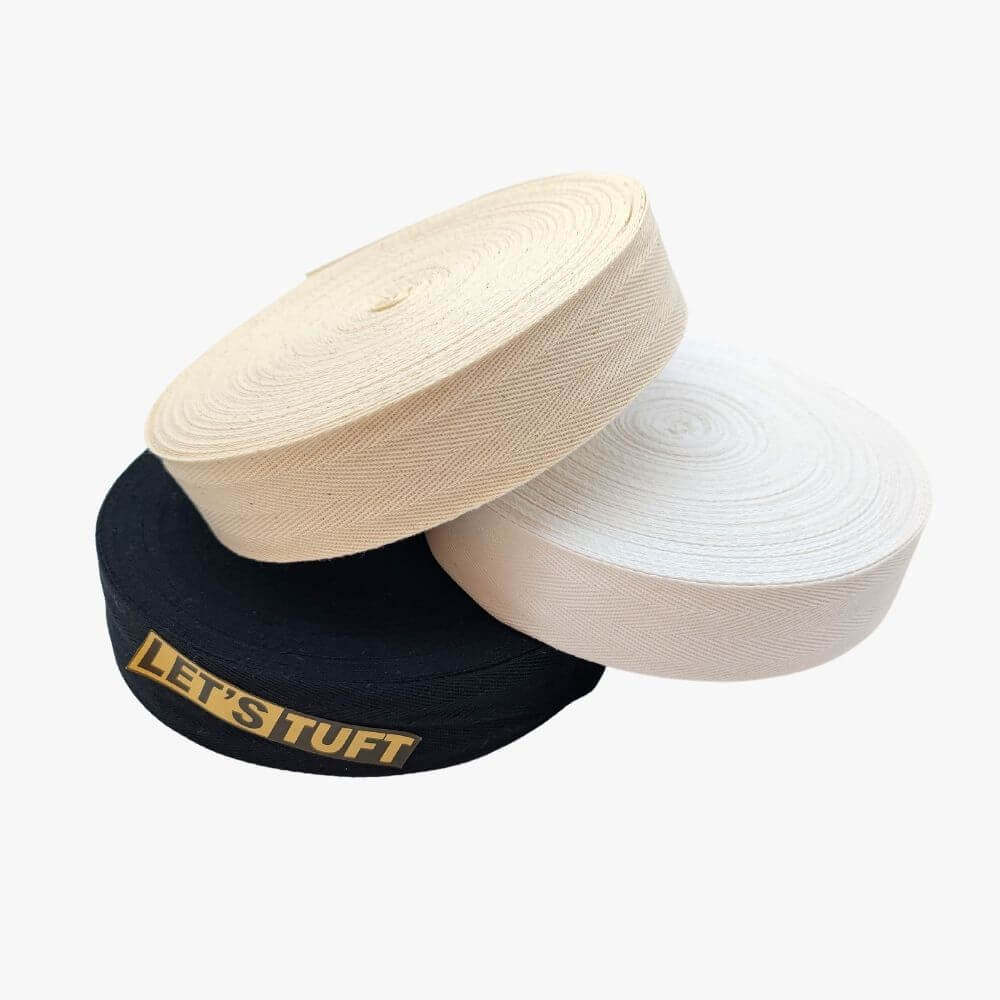What exactly is tufting and what is tufting gun? By definition, it is a cluster of fibers (yarn, hair, grass, etc.) attached to a base and bunched together. A quick example of this would be a simple carpet or rug inside our own homes.
We all have seen a rug or two at least once in our lifetime. However, sometime during the last year or two, they have suddenly become popular within the TikTok community. Whether it be for fun or profit, people everywhere have been trending with their cool tufting projects, with nothing more than a needle, yarn, and a whole lot of time.
I have seen crazy designs and pop culture references expressed through these projects, and the fact that they’re so simple to make is an eye-opener. If you ever thought to yourself, “Man, that looks so fun! How can I get jumped on the trend?”, then look no further! I’m going to break down the step-by-step guide and basics to tufting a rug from scratch.
The Essentials
The first step to any great project is understanding where to start. You can’t just take one look at your rug and suddenly understand the whole process, but would you believe me if I told you that making a rug out of thin air was easier than it sounds?
The trick is gathering the proper materials, and there are five specific items to keep in mind when starting your tufting project.
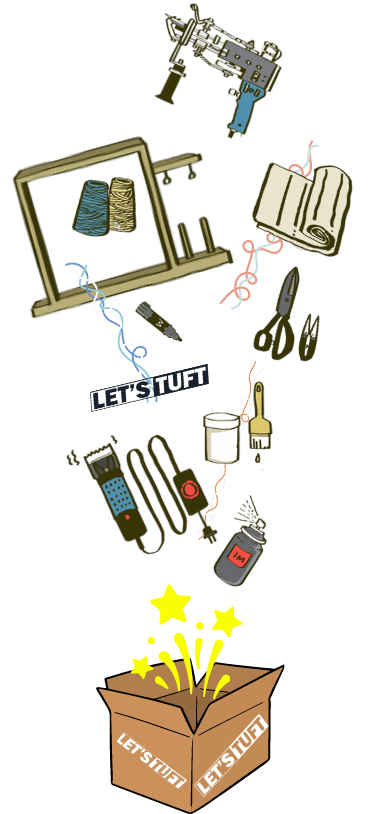
Tufting Gun
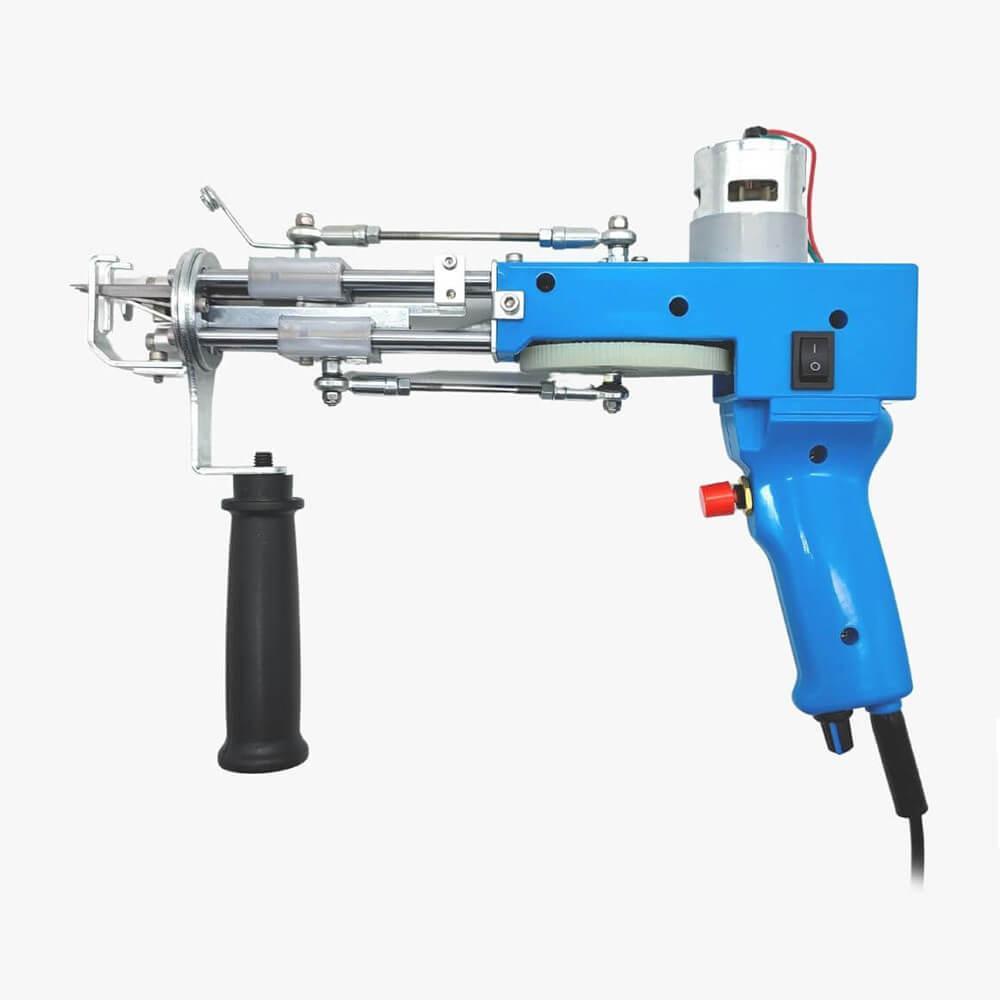
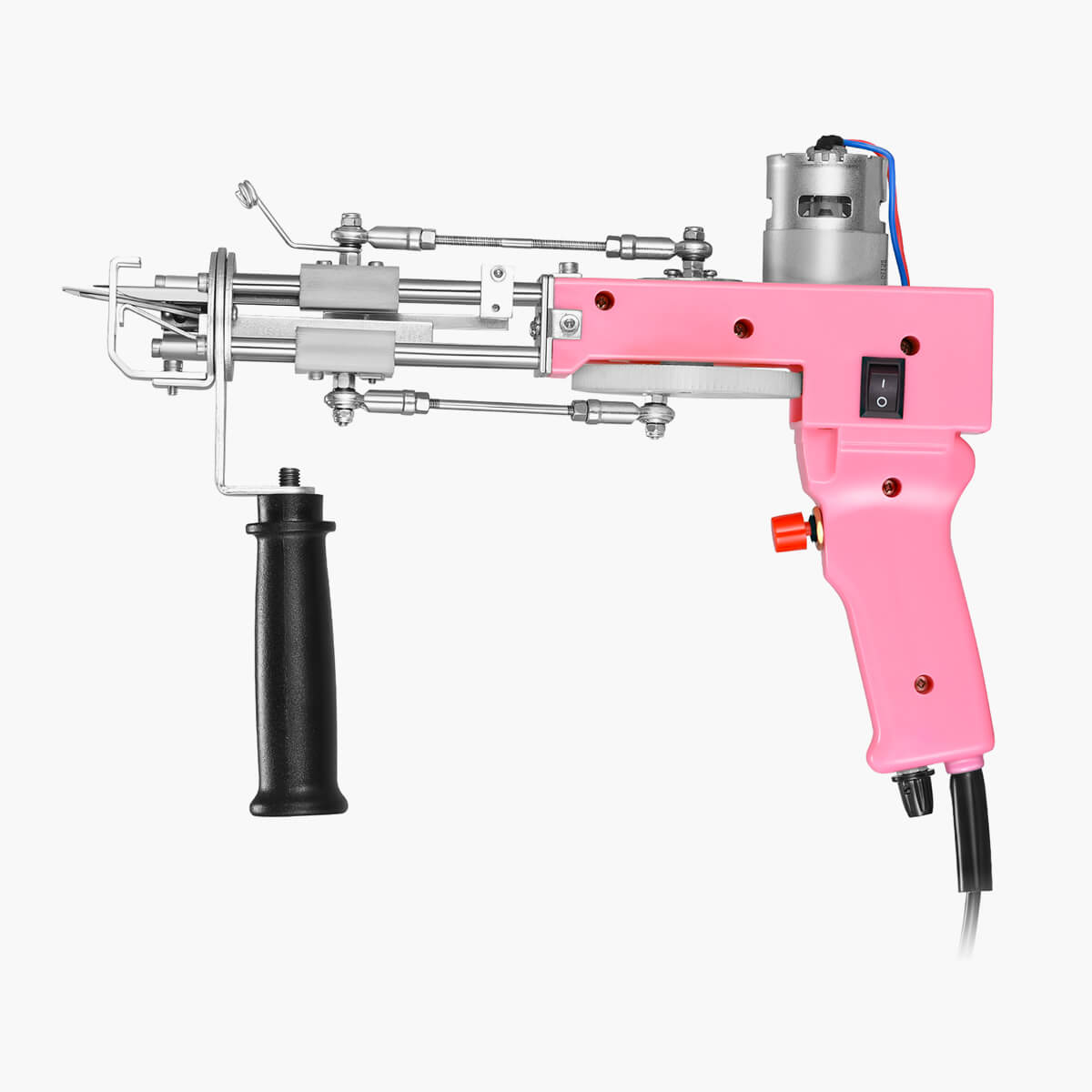
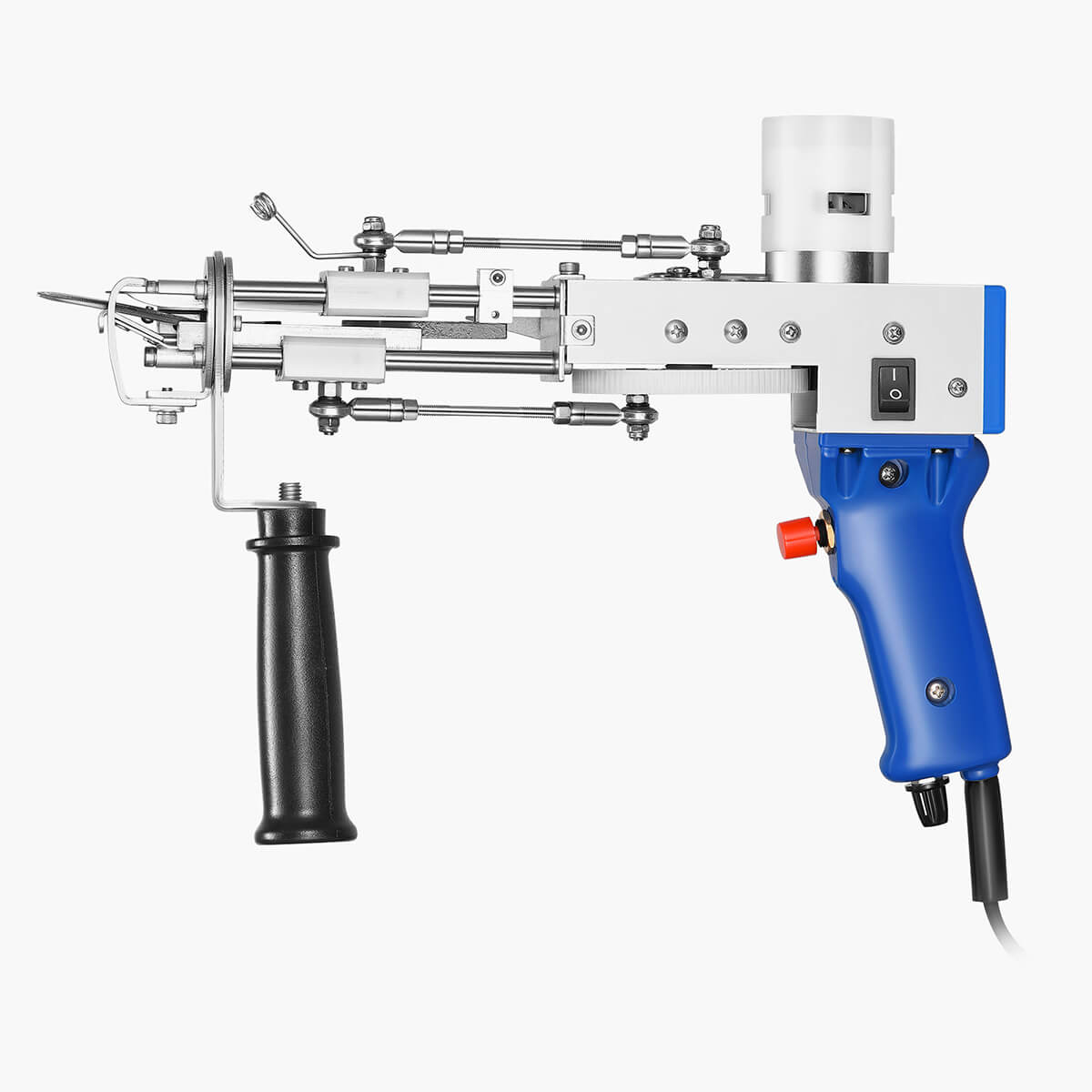
There’s no project without a tufting gun. This handy gadget is responsible for attaching your yarn and pattern to the base fabric. When deciding what kind of tufting gun to buy, the first thing you should ask yourself is what kind of style you want for your rug. There are two options:
- Cut Pile – With ends of the fibers trimmed off, giving the rug a wild, shaggy appearance.
- Loop Pile – The fibers are tight and woven, leaving no strand unchecked. It is not as soft but gives off a more formal appearance.
Tufting Cloth
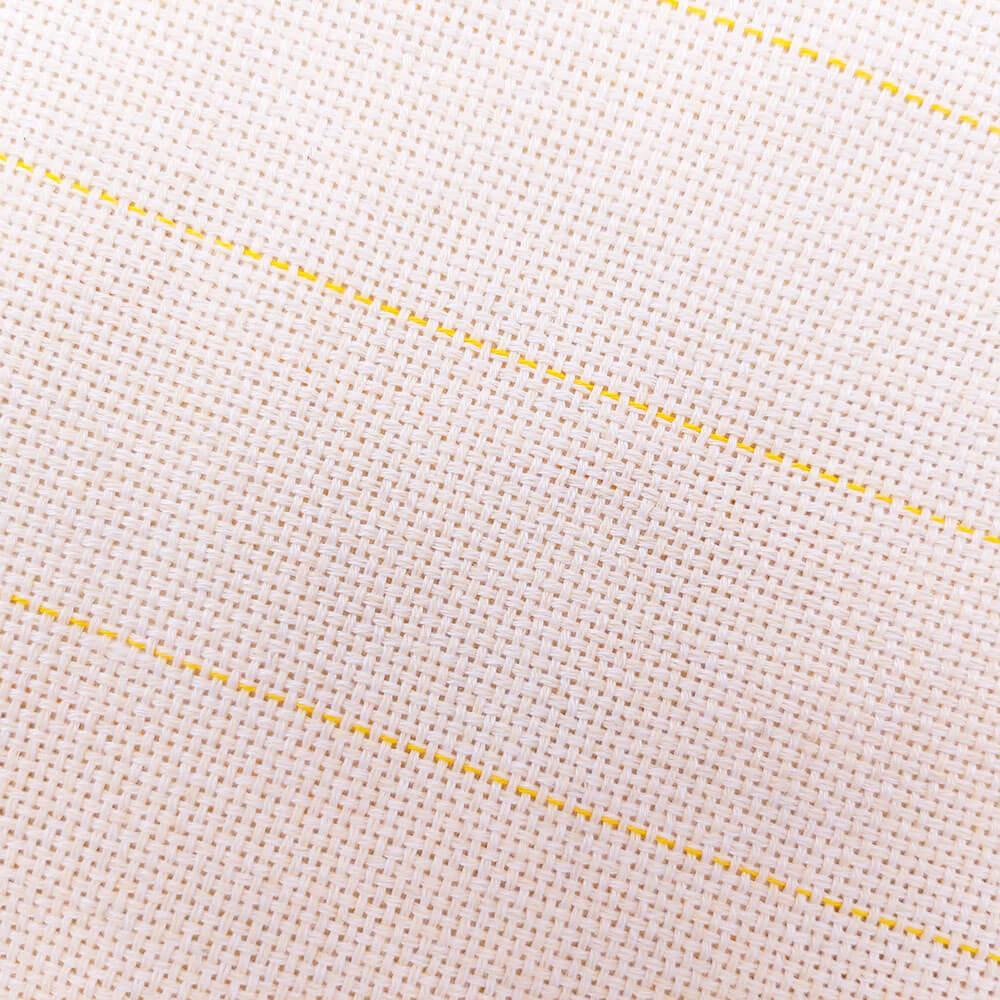
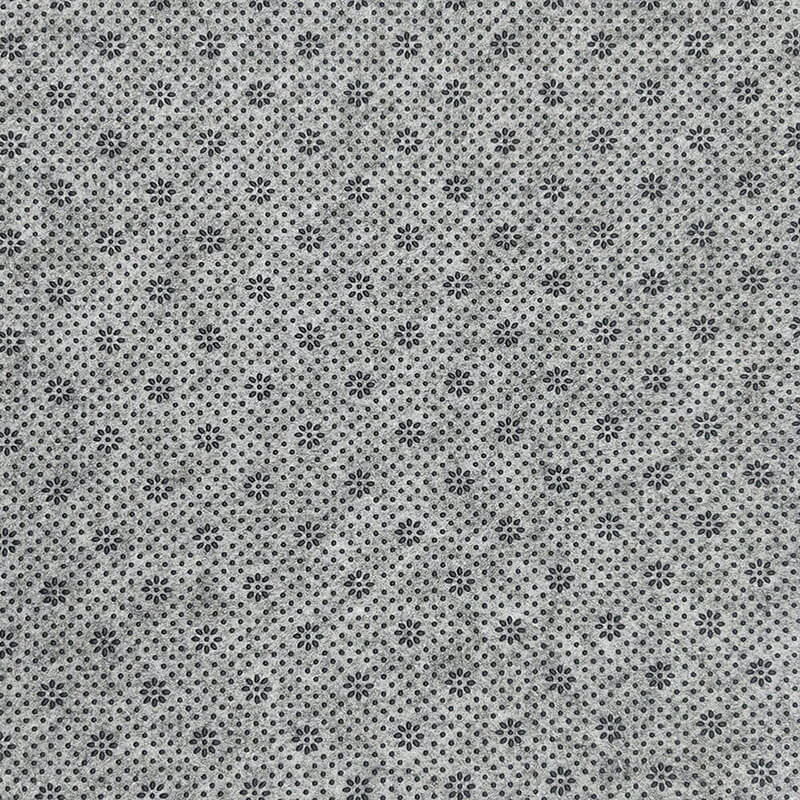
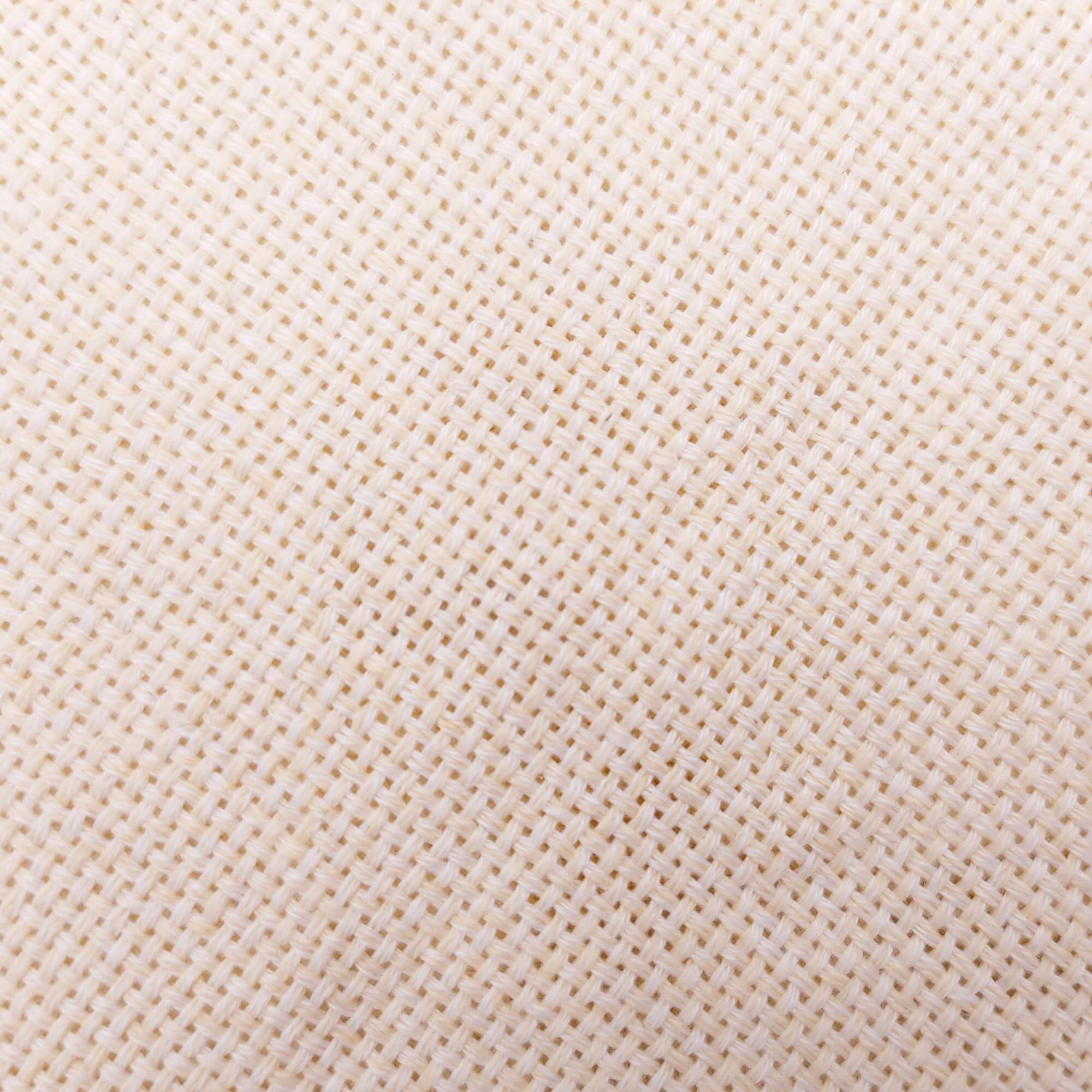
What a canvas is to a painter, a tufting cloth is to a rugmaker. It acts as the base for your project and where all the yarn will stitch on. It is necessary to know the two main types of cloth you’ll be working with, and when to use them.
- Primary Tufting Cloth – This is the standard material used for tufting. It is recognizable by the marked lines and used to guide beginners with their ideal patterns and line placements. It is also known to be quite durable to prevent any ripping from pressurized stitching.
- Final Backing Cloth – You apply this cloth near the end and place it on the backside of the rug. Without, your project remains incomplete and will leave exposed glue, so be careful!
Tufting Yarn
Here comes the part of the tufting process that depends on your taste and preference. Choosing your yarn opens up a whole field of opportunities for how the rug will turn out. Levels of thickness, fragility, and softness come into play, so you’ll want to know what’s the right one.
Here are a couple of options that are perfect for every beginner:
- Wool Rug Yarn – You can never go wrong with a yarn that traditional rug-crafters have been using for centuries. It is durable, fire-resistant, and environment-friendly. On average, this type of yarn can last for about three years before weakening, so it’s recommended to consider the strength and thickness before purchasing.
- Acrylic Rug Yarn – This type of yarn is great for beginners because of how affordable it is. However, don’t expect it to last very long. The material is soft but can get ruined easily. Most experts say that it’s more suitable for wall hangings than carpentry because of its fragility. The chances of it getting ruined are less likely to happen in suspension.
- Cotton Rug Yarn -The in-between option over wool and acrylic. Its price range is a little over acrylic, while the quality matches that of wool: thick and durable.
Tufting Frame
So far, you have the base and most of the important tools to begin your project. The next thing to ask yourself is “Where am I going to make it?”
That’s where the tufting frame comes in.
This square, wooden frame helps keep your rug in place as you stitch the yarn. Depending on your preference, they can come in different shapes and sizes. You can buy it premade or save yourself a bit of cash and make one yourself if you have a talent in woodcraft.
One essential detail to make sure you have on your tufting frame is frame grippers, also known as tack strips. They are small nails protruding through the edges of the frame and are useful in keeping the tufting cloth in place while you work.
If you need an extra grip or stability, I recommend a G-Clamp.
Rug Adhesive
Once you feel confident that your rug is complete and there’s nothing more to add to it, it’s time for gluing!
It’s said that any kind of adhesive would work to keep the yarn from falling apart. Even Elmer’s glue is a viable option. It all depends on the adhesive’s strength and where the rug will end up going.
AAT 1132 is known to work well with projects that end up on the floor due to its strength, thickness, and durability. PVA glue is the ideal choice for wall hangings and pillows if you’re looking for flexibility.
The Extras
So by now, you’ve got all the tufting tools you need to begin your tufting project. The next thing to ask yourself is “What do I do after?”
What should you do if you come across out-of-place yarn strands that destroy the piece?
Where do you begin with the corners and edges?
No reason to worry! We have all the answers here. The next set of tools isn’t necessary but can give your rug the polished look it deserves!
Shaping tools
There’s nothing better than giving your rug a nice trim and cutting off unwanted strands. A pair of standard scissors work fine, but this list of professional shears will show you the difference in quality.
- Duckbill Napping Shears – named after the shape of its blade, these shears can glide through the rug, clipping strains left and right. The offset handle makes space between your hand and the floor to avoid uneven trimming.
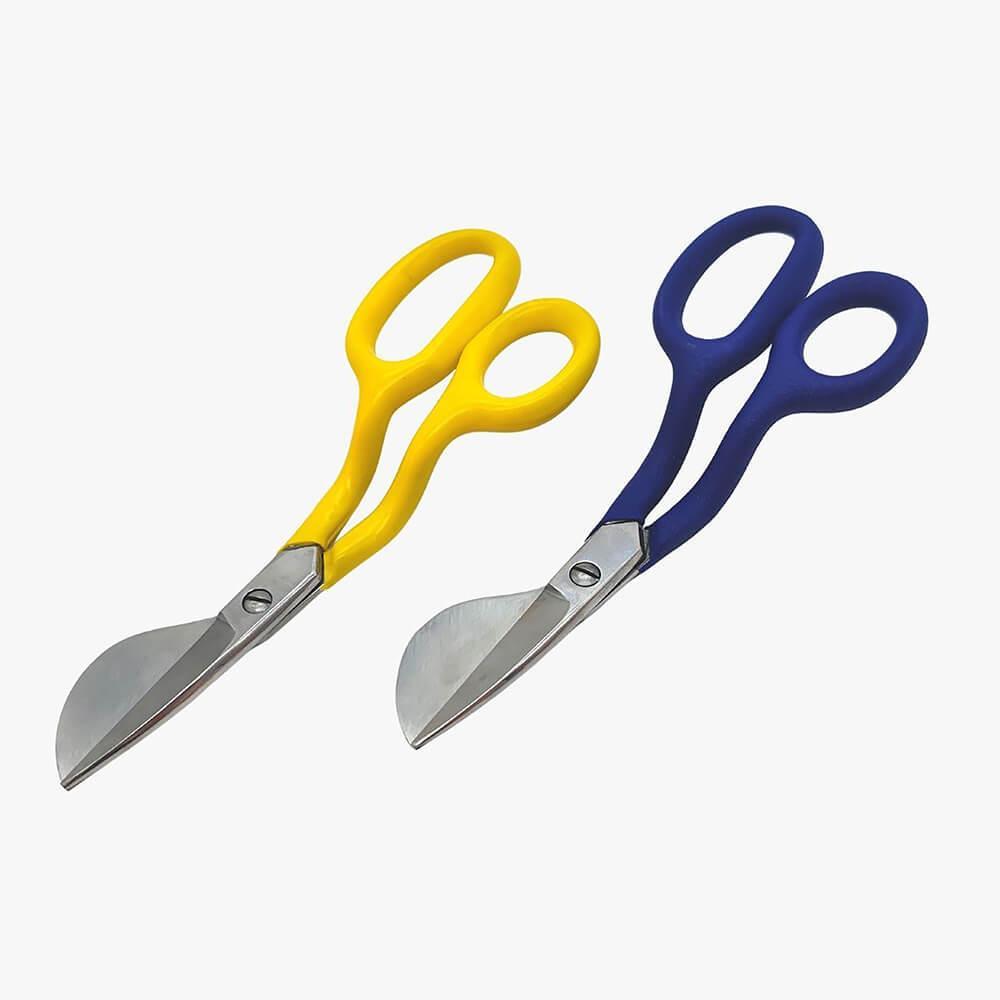
- Dressmaker Shears – The length of these blades make for an admirable feature. They are very useful in cutting down several strands at once and your own trimming time.
- Thread Cutting Scissors – Small size calls for tiny, accurate trims. They are useful for picking out specific strands and creating patterns.
- Grooming Razors – If you own any pets with heavy fur, their razors would also work as alternative shears and are a quicker solution to rug trimming as they can cover more area. Also, adjustable guards are something to consider to determine the height of the strands.
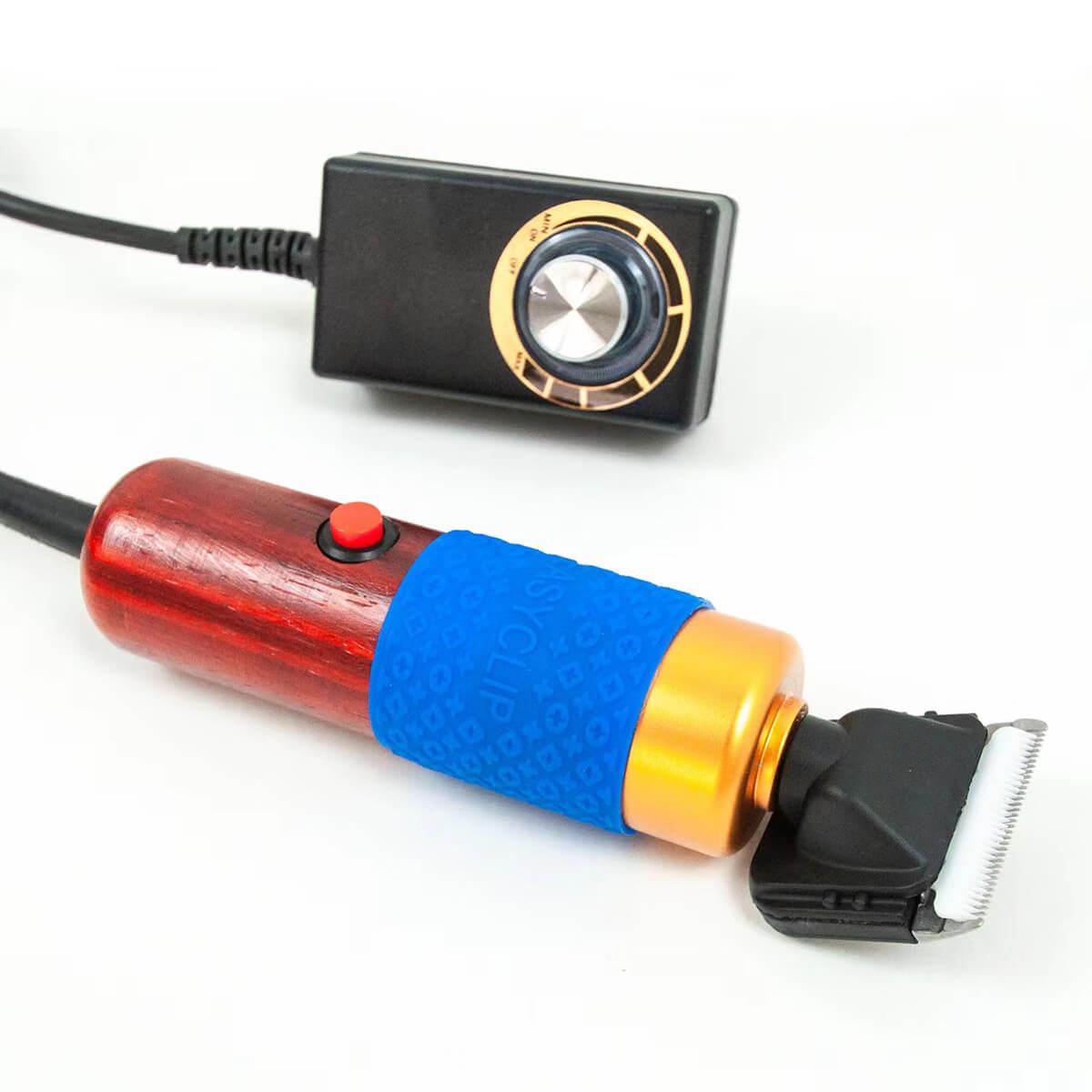
- Carpet Shearing Machines – Out of all the options, this one is the most industrialized. For those who can spend the extra cash, it’s guaranteed to give your rug a full cut. Its wide, flat surface keeps everything even, leaving no awkward strand left standing.
Hot Glue Gun & Rug Binding Tape
A hot glue gun and carpet binding tape will be your best friend to get those refined edges.
You can use tape to bind the edges of the carpet. It will make your rug look more attractive and prevent any last-minute fraying or unraveling. The process can be done through a machine at your local carpet store or by hand with Instabind.
The hot glue gun helps in making small beads of adhesive to connect the seams. Unless you want your rug to come out looking bulgy in all the wrong places, make sure to use a considerate amount.
Yarn Winders/Cones
Everyone who’s ever worked with yarn knows the terror of having it tangled. All that time wasted on straightening out the string gets boring fast. It would be in your best interest to own a yarn winder to prevent such obstacles.
There are many benefits to having a yarn winder around, such as minimizing time and problems with tangled balls of yarn. It’s a quicker solution to winding up yarn than doing it by hand. It can also pull away yarn without destroying the ball itself.
Most people don’t know that a yarn winder can maintain the yarn’s elasticity. There is such a thing as winding too hard to stretch out the fibers, but using a winder takes that into account. It will tighten the yarn enough to keep the ball intact while also leaving some looseness that won’t damage the yarn in the long run.
The yarn roller keeps your yarn organized too! Since the yarn is wrapped up in a cylindrical figure, the top and bottom are flat, allowing any extra yarn balls to be stacked on top of one another.
While a yarn winder is an ideal choice for most crafters, there are alternative ways to wind yarn for those on a tight budget. All you would need is a cylindrical center to wrap the yarn around. Items such as a naked paper towel tube, rolled-up paper, knitting needles, or even your finger!
Loop Needle Threader
For those who get frustrated trying to insert the ends of the yarn through a needle’s eye, you’ll benefit greatly from owning a loop needle threader.
This small disk can be seen as a tiny set of hands to guide the yarn with little struggle. It sells at an affordable price but gets wary over time, so don’t expect it to last forever. A tool like this still requires steady fingers and adequate control over your dexterity.
Summary
Few rarely think about the process of creating a rug, and I hope that this guide simplified the experience. It all comes down to finding the right rug size, the amount of yarn you’ll be using, and a tufting gun to put it all together. Afterward, trimming and finessing the edges would be a relaxing treat itself.
Above all else, have fun with the project! There’s no one way to go about making your rug, so make sure to be creative and explore all your options. Start with a simple concept, and work our way towards more complex ideas once you get the hang of it.
If you’re looking for a place to gather supplies, TuftingPal offers a wide range of supplies, from cloth to tufting guns and an assortment of yarn.


